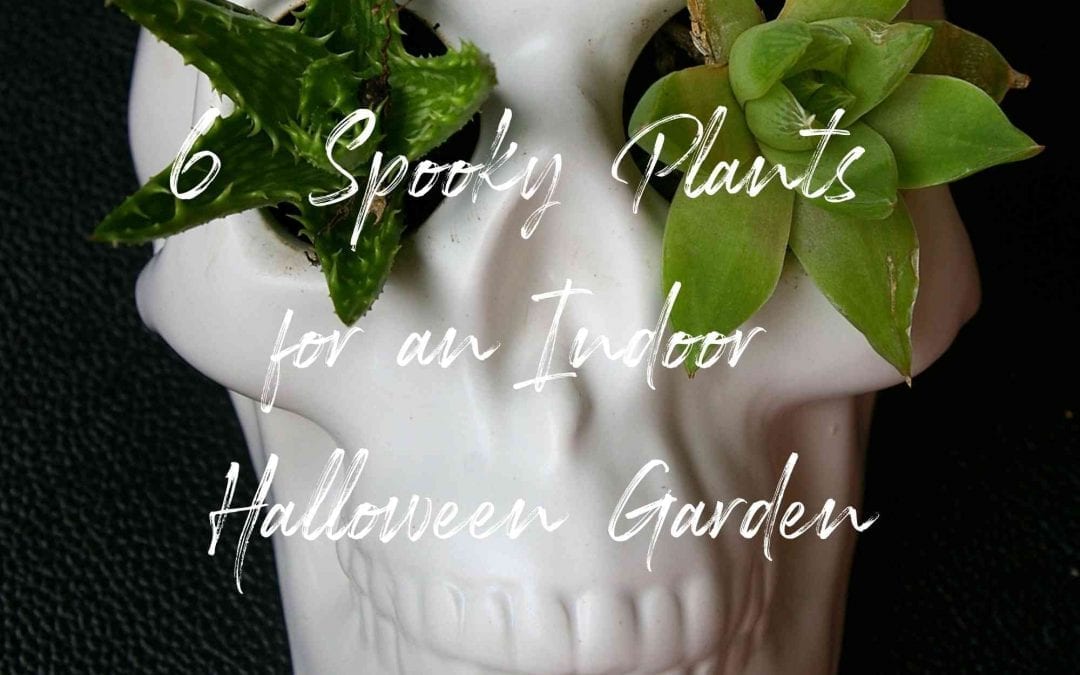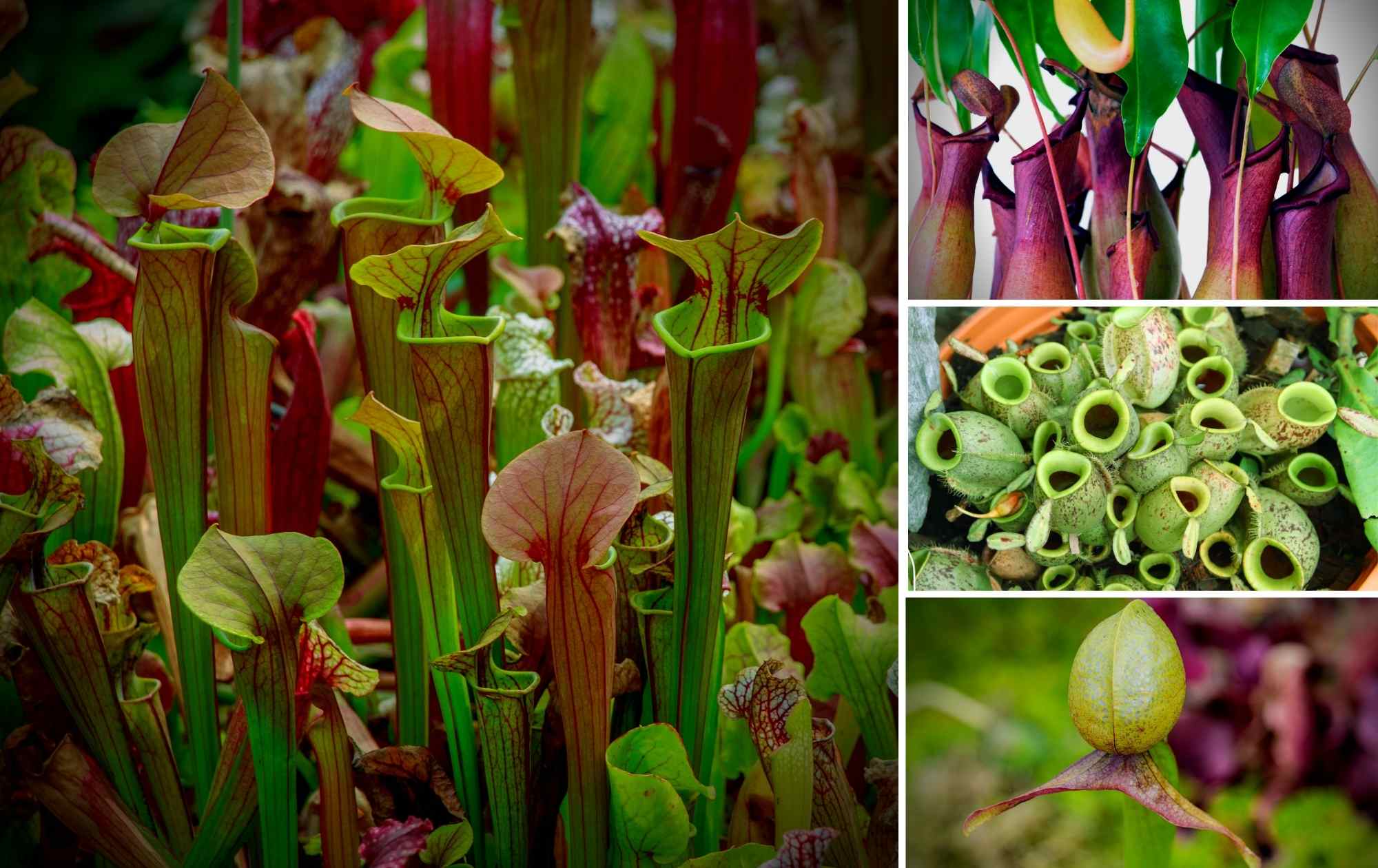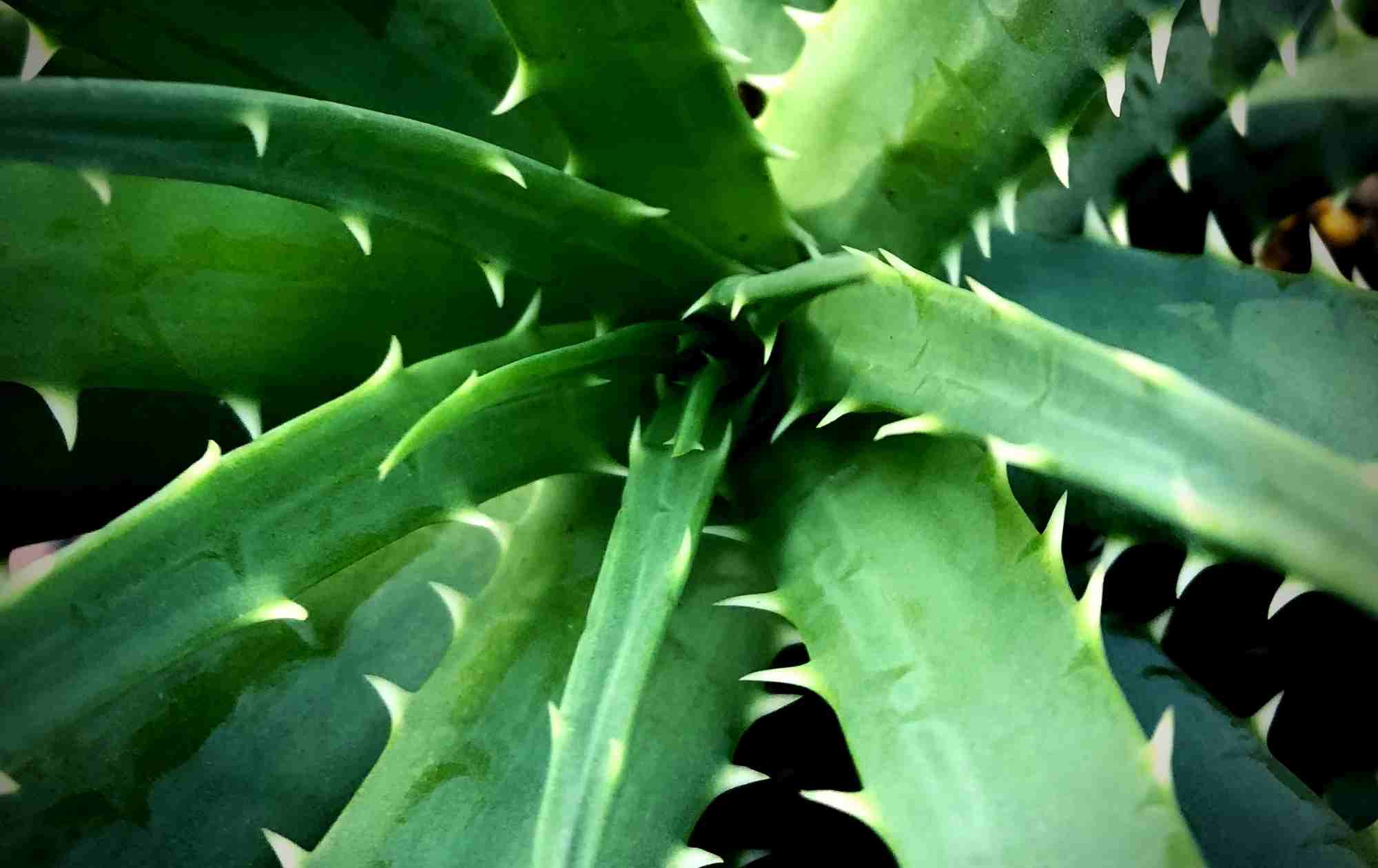Boost Your Indoor Decor With A Halloween Garden
Plants can offer some great fear factor with spines, needles, and carnivorous tendencies. Instead of plastic Halloween decorations, go natural with an indoor Halloween garden! Nature has plenty of beautiful and bizarre creations that will fit right in with your vampires, monsters, and ghosties.
Monster Mystery

Monstera Plant
Create a little mystery by using this plant to provide glimpses of a scene beyond. Also known as the swiss cheese plant, the Monstera deliciosa is a great option for an indoor spooky scene. Its naturally-forming holes in its leaves can look like eyes. Or, they provide a way to peer into spooky scenes…beyond.
To create a living room divider, try placing a few of these plants in a trough planter or frame-style plant stand like this one by Johan Kauppi. (Featured on the popular design website, Design Milk.) Backlight with purple, orange, or other Halloween lights for extra effect.
Caring for a Monstera is fairly straightforward and very similar to that of the Higuera de hoja de violín. This plant is native to Central America and prefers tropical-style environments. They need bright but indirect sunlight and prefer a more humid environment if you can provide one. (Once acclimated, normal room humidity will do just fine.)
Watering on a regular cycle is best. Follow an appropriate watering frequency based on your plant size, container, and location. Yellowing leaves can be a sign of overwatering.
Dark and Twisted

Snake Plants
La Dracaena trifasciata gets its common name of “Snake Plant” because of its elongated and twisting shape. Other names include “Mother-in-law’s Tongue” due to its characteristically sharp leaf edges. Provide some up-lighting and these plants can look as though they’ve come alive! (Muahahahaha)
Snake plants work well in low-light locations and even tolerate irregular watering. So, it’s one of the easiest houseplants to care for and makes for a great investment. It’s highly adaptable. Interestingly, it was also once used to make bowstrings in Japan. But perhaps most beneficial of all, the snake plant is a powerhouse for cleaning the air in your home.
Not all snakes are poisonous. But, the Snake Plant can cause gastrointestinal upset if ingested by your dog or cat. So, place this one in an area of your home that isn’t frequented by cats or dogs that like to nibble.
Bloodthirsty Piranha
The Venus Fly Trap
The Venus fly trap looks a bit like the man-eating Piranha Plant in Nintendo’s famous game, Super Mario Bros. Plants that can eat humans are easily a spooky thought. Though man-eating plants are purely science fiction. No plant has ever been discovered that has the ability to eat a person. (Despite many old and debunked tales.)
When we think of carnivorous plants, Venus fly traps may come to mind. They certainly are creepy looking, with leaves that look like mouths and spines that look like teeth. It seems as though they could bite off a finger. But, they’re completely harmless to humans. (And, a wonderful addition to your indoor Halloween garden.)
They attract their prey using sweet nectar droplets that sit on the open surface of the trap. When the hairs on the inside of the Venus fly trap’s “mouth” are triggered, the halves snap shut with an electrical charge. The “fangs” at the edge cross to cage its prey inside. The insect’s continued struggle causes the trap to seal. Then, the plant emits digestive enzymes that digest the insect’s soft tissues. After about a week, the trap will reopen and use the carcass to attract more prey.
They’ll need bright light and high levels of moisture to thrive in the home. If the lighting isn’t bright enough, you may notice the leaves become weak and floppy. And, you just might need to pick up some freeze-dried crickets or mealworms at a pet store to keep them fed and happy all year long. Most carnivorous plants need an insect or two per month to perform their best.
Water from rain or distilled sources is best, as Venus fly traps require pure water. Bottled, filtered, or tap water can result in a build-up of minerals that your plant won’t like. These plants prefer soil that is wet, but not waterlogged.
Venus fly traps require a winter dormancy period between November and February. They need a cold (not freezing) resting place; a window near a garage or shed would work well. Keep soil just barely damp during this time. Because they’re not in their growth stage at this time of the year, you’ll want to water them less but don’t let the soil dry out.
Follow Me to My Lair
Pitcher Plants
Some might find the next one on our list to be a pretty weird plant. These odd-looking little guys look like something out of science fiction. A little research on the topic of carnivorous or Halloween plants is bound to surface the pitcher plant.
There’s extreme diversity among the varieties due to their ability to reproduce as a hybrid. That means there’s nearly endless possibilities for colors, shapes, heights, and characteristics. A few commonly seen varieties include monkey cups (top right), trumpet pitchers (large, left), and cobra plants (bottom right).
The plants ingeniously lure their victims with nectar in the top flaps or in the cups themselves. The insects seem nearly drunk on the sweet smell as they fall right in the long throat of the plant where they’re digested. If kept outside in the summer, it’s not uncommon to see their necks filled with ants, wasps, spiders, and other insects.
Store-bought freeze-dried insects are a great supplement through winter or if indoors full-time. Like Venus fly traps, they require a minimum of 1-2 insects per month. Similarly, they’ll need to be planted in non-mineralized planting mediums. Cactus and succulent soil mixes usually work well.
Most pitcher plants need bright light and pure water with non-mineralized water like rain or distilled. They’ll need to be kept wet but not waterlogged during the growing season, and then just damp during dormancy (November through February).
Varieties like trumpet pitchers are native to the northern US and are much more cold hardy. During dormancy, North American-native pitcher plants actually need cold temperatures (around freezing).
What Big Teeth You Have…
Hedgehog Aloe
A close-up look at a hedgehog aloe plant can easily remind one of the Demogorgon from Netflix’ Stranger Things. Many are familiar with Aloe vera, but a hedgehog aloe plant is know as Aloe humilis. The hedgehog variety has distinctive spines along the margins of the succulent leaf that set it apart from its cousin. Though its spines look dangerous, they’re relatively soft to the touch. So, these are a great addition to your Halloween garden.
Literally translated, Aloe humilis means low-growing. But, even though their leaves are not the longest, these little guys can produce flower stalks up to a foot tall! The reddish-orange flowers are a favorite of hummingbirds, so leave them outdoors during the hot summer months for a great show.
There are over 500 species of plants within the Aloe genus. Depending on the variety, leaves may look short and scalloped or long and narrow. We might be used to the healing nature of some Aloe species. But, not all Aloes have salicylic acid, which is a natural anti-inflammatory agent. In the case of the hedgehog, it’s best to enjoy its ornamental and air-purifying values. NASA scientists note that Aloe plants are excellent at removing formaldehyde and benzene from the air. Those chemicals are often a byproduct of chemical-based cleaners, paints and more.
Like most succulents, the hedgehog aloe doesn’t require much water. During the dormant season in winter (November-February), water only once the soil has completely dried. In the summer during its active growth period, it’ll prefer moist soil. Just make sure it’s not soggy. Too much moisture will rot and kill the plant.
PRO TIP: Base your watering schedule on the plant’s size and location in your home. Water the plant initially over a sink until well saturated and heavy. Then, don’t water until the container feels light and completely dry. The period of time between saturation and dry is your watering interval. We’ve created a helpful YouTube video to guide you through this process.
Needle Pit
Barrel Cactus
Psychologists often explain that soft, rounded shapes make us feel happy, comfortable, and secure. Whereas sharp, pointed objects make us feel scared and vulnerable. Alfred Hitchcock masterfully leveraged this understanding in his films. He demonstrated that sharp and pointy things like bird talons/beaks, knives, and so forth added a cringe-factor when close to eyes or faces.
You can leverage this same technique in your Halloween garden and indoor decor. The Barrel Cactus, shown above, has many spines along its ridges. Bring this pointy element of your Halloween decor closer to eye-level by placing them on a higher shelf or ledge. This increases the ‘creep-factor.’ Just make sure you clear any trip-hazards around them first.
Care for these plants is minimal: lots of light and minimal, regular watering. Watering is most successful when you can follow the technique noted above (drench the soil and then dry completely). And only water the soil, not from the top of the plant. Cacti with water left on its skin can burn when refracted in sunlight. Fertilization isn’t required for a Barrel Cactus to achieve maturity, but can help stimulate flower growth. The main barrel will grow up to 22 inches across, so keep this in mind when planning a Halloween garden pot indoors. Or, plan to transplant as it grows larger.
A note of caution: be careful not to overwater. The plant will rot if left in soil that is too wet, so select a well-draining soilless mix. Espoma’s cactus and succulent mix works well.
Platt Hill Nursery es el principal centro de jardinería y vivero de Chicago.





